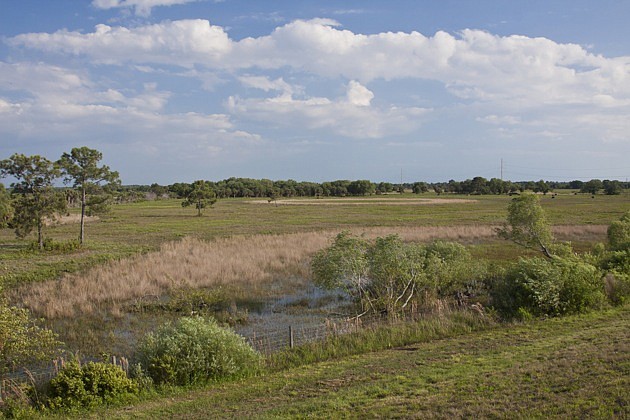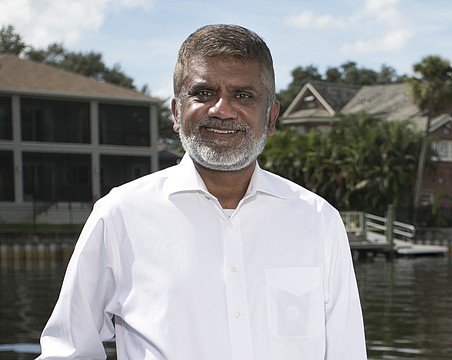REVIEW SUMMARY
What. Energy economic zones bill for green jobs.
Issue. Hung up legislation opposed by major landowner could mean incentives may be too little, too late.
Impact. Hoped for one percentage point reduction in Sarasota County's 12.5% unemployment rate.
Energy-related legislation promising new “green” jobs is getting a lot of attention in Tallahassee — and Sarasota too — as the final week of this year's regular session approaches.
One bill was drafted by Sarasota County government representatives to stimulate energy-efficient economic development and jobs to combat its 12.5% unemployment rate. But that particular bill — termed “economic energy zones” or “EEZs” — may die on the vine even after being pruned at the insistence of Florida's Department of Community Affairs, or maybe Sarasota County. They are pointing the finger at each other.
Whoever diluted it, killing the bill is just fine with Hugh Culverhouse, Jr., the outspoken Palmer Ranch landowner.
His 685 acres at Interstate 75 and State Road 681 is the most affected by the energy economic zone proposed by the county largely without Culverhouse's or other landowners' input. The whole 1,100-acre site is the largest tract of undeveloped land inside the urban boundary, which mostly parallels I-75.
The conceptual plan calls for creating a major employment center and a village commercial designation allowing 1.5 million square feet of office and clean technology uses, 250,000 square feet of retail, and 1,900 dwelling units.
“I don't need the Legislature. I don't want them. I work with DCA,” says the former Miami and Securities and Exchange Commission attorney. Culverhouse is known for his feuds with the county over the past two decades since taking over the company after his father, former Tampa Bay Buccaneers owner Hugh Culverhouse, died in 1994.
Another catch-22?
Culverhouse's position is curious, though, because the legislation offers significant incentives for businesses to locate in the zone.
The catch is those companies must be willing to comply with the inevitable “policy cluster” of zoning, energy and environmental regulations. That includes rules for low impact development the county is already developing for the zone and elsewhere. Green roofs may be required.
And all those new rules may be what has Culverhouse concerned, though at least one county official seems to acknowledge the need to balance regulations with incentives. “It has to work economically,” says Jeff Maultsby, the county's manager of business and economic development.
Still, few have been more subject to environmental and planning regulatory schemes as much as Palmer Ranch and Culverhouse, though developers of nearby Lakewood Ranch have been feeling the political pain for most of this decade, also. Just this month, a Lakewood Ranch mixed-use master plan for its Villages of Lakewood Ranch South was voted down 5-3 by Sarasota County's planning commission.
Lakewood Ranch, and other village-type developments outside the urban area are subject to a massive Catch-22 regulatory scheme known as Sarasota 2050. One key provision requires plans to be fiscally neutral, but planning commissioners dispute the fiscal neutrality claims contained in a report accompanying the village master plan, leading to the recommendation for denial.
But according to county planner Matt Lewis, whose leading the energy economic zone effort, a conceptual plan for an area just south of Lakewood Ranch off Fruitville Road immediately east of I-75 has been warmly received just this month. That reaction came either as a result of, or in spite of, a community input session.
The Fruitville site has much of the same energy efficiency and environmental objectives, and received some consideration for becoming an energy economic zone. However, county staff says the property along the S.R. 681 corridor was a better match for this program because of its size, central county location and commitment of the property owners to green economic development.
Cutting incentives
The 2009 law directs the state's DCA to oversee the two-year program, and to develop a model of sustainable, energy-efficient land-use development that could be transferred to other Florida communities. That led to two isolated locations in Sarasota County, and the city of Miami Beach as a more urban model, being selected from among six local government applicants.
The bill also caps the total of incentives at $300,000 a year for each of the two pilot communities. That proposed funding, however, is what might ultimately kill the bill because of the tight state budget this year.
This year's bill creates five state tax incentives — similar to ones for enterprise zones — for businesses that locate or expand in the energy economic zones. The original bill contained six state tax incentives and had no cap on funding.
The committee cut provisions exempting development within the pilot areas from development of regional impact review and transportation concurrency requirements — two of the most cumbersome and expensive processes developers must plow through for larger projects.
Another provision axed would have made development in the zone potentially eligible for higher residential densities, consistent with state and local goals for more compact, energy efficient, urban development.
Bennett works closely with DCA staff, even more so this year as the department went through a somewhat controversial periodic sunset review. In the end, despite some conflicts with department Secretary Tom Pelham, Bennett supported the department's continuing existence.
Bennett might have reason to regret the decision. According to Sarasota County's Marsha Hosack, the county's intergovernmental relations manager, it was the department that put the kibosh on the regulatory incentives. But an April 20 email from James Miller, DCA's public information officer, states, “These changes were made by Sarasota County, which is pushing the bill, after various entities raised a lot of concerns about the bill. DCA made no requests about the specific changes mentioned.”
Now, Bennett is trying to find support in the House to tack the bill on to another House energy bill. He's in negotiations to do just that because the House version of the bill, sponsored by Rep. Keith Fitzgerald, D-Sarasota, never made it to one committee hearing.
Neighbors weigh in
But all the legislative sausage making is of little import to the Nokomis Area Civic Association members. The group, which includes residents from the adjacent Calusa Lakes neighborhood, gathered April 19 to hear county staff and consultants explain for an hour the energy economic zone conceptual plan.
The mostly elderly retiree residents wanted to know how many people and how many square feet of commercial and industrial development to expect and when.
One resident asked for a charette, which Culverhouse says he's adamantly opposed to. He says County Commissioner Jon Thaxton, whose district includes the zone, suggested a charette too, but agreed to back off the idea after Culverhouse objected to it.
Asked about the charette idea immediately after the association meeting, County Commissioner Nora Patterson says charette's are more appropriate where there's a blank slate for development.
In this case, Culverhouse and the other property owners have development rights — for 2-5 single family residential units per acre on the Palmer Ranch land. Other property in the zone at U.S. 41 and S.R. 681 has development approval for 5-9 units per acre. That site is owned partly by Benderson Development, and a company controlled by developer Henry Rodriguez.
Osprey community activist and “vote-on-everything” Amendment 4 supporter David Merrill, also a former Sarasota City Commissioner, was asking lots of questions following the Nokomis meeting. He wants assurance that it won't end up looking like an industrial complex with manufacturers.
WilsonMiller planner Jim Paulmann, whose team is assisting the county with the project, says the commercial development will look more like the Lakewood Ranch corporate park. Translated, that means clean technology manufacturing with loading bays are a possibility, uses that Merrill generally objects to. But Merrill says if it's designed properly he may not oppose the plans.
If the legislation doesn't pass this session, county officials plan to move ahead with a comprehensive plan amendment with a planning commission hearing set for May 20. The hope is to get the amendment sent to the department of community affairs before Amendment 4 could become the new law of the land.
If it passes, Culverhouse and every other landowner and developer in the state will have a lot more to worry about than energy economic zones.
For more information about the Sarasota County energy economic zone comprehensive plan amendment go to: www.scgov.net/PlanningandDevelopment/CompPlan/Amendments.asp.
For information and the latest on the energy economic zones legislation, Senate Bill 2644, go to www.flsenate.gov, select “Session”, then “Bills” and select “S 2644”.






